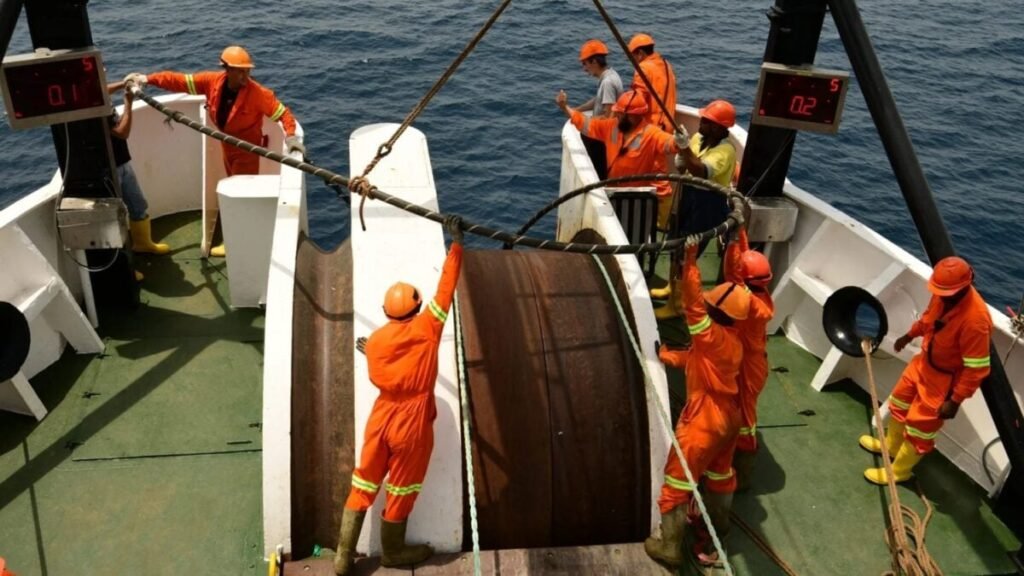One Boat, Africa’s Lifeline to the World, Reveals a Critical Flaw in the Modern Internet.

At 6,000 meters below the surface of the Atlantic extends the intricate network of submarine cables. Through them circulates 99% of global internet traffic, from emails to banking transactions. This underwater highway carries light signals traveling at 200,000 kilometers per second. And although they seem invulnerable, the ship is the only one that can act immediately when something goes wrong. Belonging to the fleet of Orange Marine, it has been navigating the African coasts between Ghana, Madagascar, and Morocco for over thirteen years, ready to intervene in any emergency.
It has a length of 107 meters, a small robotic submarine, and a crew of sixty people operating like a floating operating room. They locate the fault, lower a ROV (remote vehicle), and cut the damaged section. Then, the delicate process of repairing the cable begins. Each repair can take days or even weeks.
### When Africa Loses Connection
In March 2024, a series of unfortunate events led to several simultaneous cuts that left millions of people in West and Central Africa without connection. The cause was over 3,000 meters deep, near the Congo Canyon, a huge underwater rift where sediment slides dragged several cables. While other ships awaited permits or were too far away, the crew of the ship took less than 72 hours to start the repair. Since then, it has become a kind of digital firefighter for the continent: every time a country loses connection, its distress signal goes straight to the Orange Marine vessel.
Incidents are not rare. On average, more than 150 interruptions in submarine cables are recorded worldwide each year. Most are due to anchors, earthquakes, or storms. But in Africa, with only one ship available, every failure becomes a critical operation.
### The Most Ocean-Dependent Continent
The true digital infrastructure of the continent lies beneath the sea. Cables like 2Africa, with 45,000 kilometers, surround the continent connecting Europe, the Middle East, and Asia. These systems support economic growth, mobile networks, and data centers processing artificial intelligence. Without them, digital services, banks, and governments come to a standstill. That’s why the ship plays such a crucial role.
### The Cost of Keeping the World Connected
The crew of the ship spends months at sea, always ready to set sail. “When something breaks, there are no substitutes. We are the only ones,” recounted an Orange Marine engineer. The work requires extreme precision: the cables are the thickness of a household hose, but inside they house dozens of optical fibers encapsulated in steel, copper, and polyethylene. On the surface, the ship becomes a workshop. Pieces are welded, tested, and returned to the seabed with the ROV, which carefully places them back in position. Then, the ocean current covers the area with sand and the connection flows again.
The process is invisible to the world, but crucial for everyone.
### A Silent Hero of the Digital Age
In an era when we talk about quantum computing and colonies on Mars, the ship quietly continues its mission. Their work may not have glamour, but it keeps alive the global network that shapes our daily lives. Every time a signal travels back through the cables of the Atlantic, millions of connections are restored, and a continent breathes again. Because Orange Marine doesn’t live in the cloud. It lives in the ocean. And as long as this ship keeps sailing, Africa will remain connected to the rest of the world.




